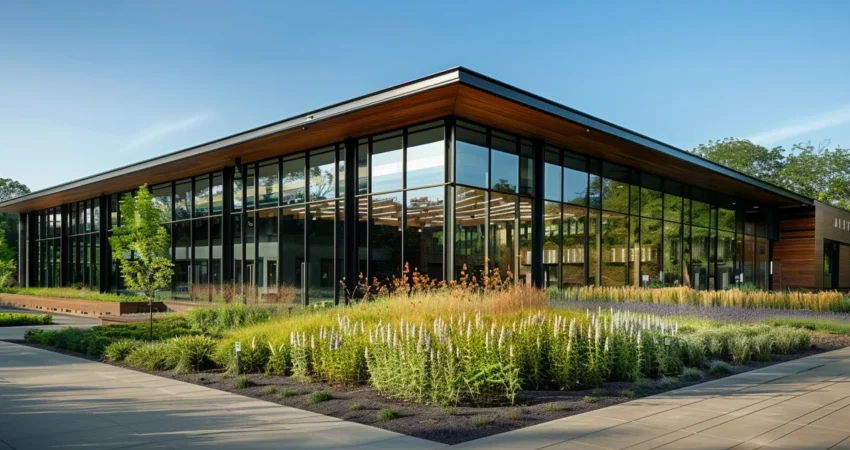- December 19, 2024
- Blacksheep Construction
Table Of Contents:
- Sustainable Building: Implementing Eco-Friendly Techniques for Low-Impact Construction
- Key Takeaways
- Understanding the Principles of Sustainable Building
- Selecting Sustainable Materials for Construction
- Selecting Sustainable Materials for Construction
- Implementing Energy-Efficient Design Strategies
- Incorporating Water Conservation Techniques
- Reducing Waste in Construction Projects
- Learning From Sustainable Building Case Studies
- Conclusion
Sustainable Building: Implementing Eco-Friendly Techniques for Low-Impact Construction
Sustainable building is not just a trend; it’s a necessity for reducing environmental impact. With construction contributing significantly to waste and resource depletion, homeowners often struggle to find eco-friendly solutions. This article will explore key techniques such as selecting sustainable materials, implementing energy-efficient design strategies, and incorporating stormwater management practices like bioswales. By engaging with this content, readers will learn how to create low-impact construction projects that not only benefit the planet but also enhance their properties, including options like green roofs. Black Sheep Construction is here to guide homeowners through these essential practices.
Key Takeaways
- Sustainable building practices significantly reduce environmental impact and enhance resource efficiency
- Utilizing renewable and recycled materials is essential for eco-friendly construction projects
- Implementing water conservation techniques helps minimize urban runoff and greenhouse gas emissions
- Developing a construction waste management plan is crucial for effective recycling and resource repurposing
- Integrating energy-efficient systems optimizes energy use and supports sustainable building goals
Understanding the Principles of Sustainable Building
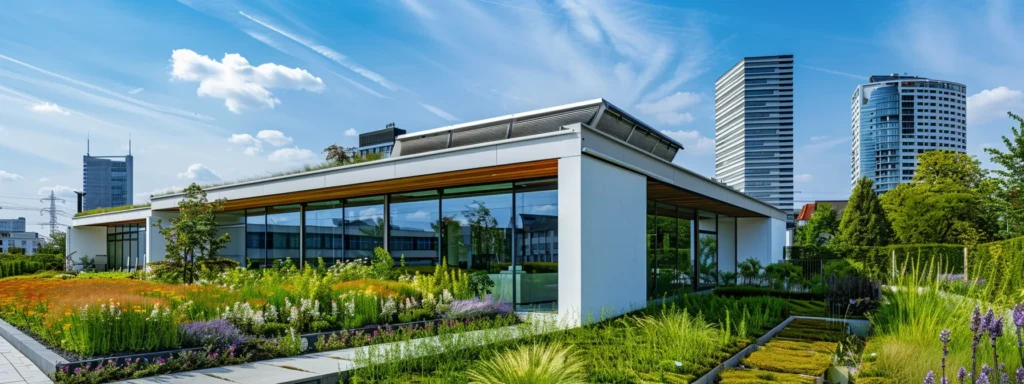
Traditional construction methods often lead to significant environmental impacts, such as those used by black sheep construction, prompting a shift towards sustainable building practices. Core concepts of eco-friendly techniques, such as low impact development and effective drainage systems, are essential for minimizing ecological footprints. Implementing features like cisterns not only conserves water but also enhances the overall efficiency of construction projects, providing numerous benefits for architects and builders alike.
Recognizing the Environmental Impact of Traditional Construction
Traditional construction methods often generate substantial debris, contributing to landfill overflow and environmental degradation. The lack of effective recycling practices in these methods can lead to the unnecessary loss of valuable materials, which could otherwise be repurposed. Additionally, the disruption of soil and vegetation during construction can harm local ecosystems, highlighting the need for sustainable practices that prioritize environmental preservation and resource efficiency.
Core Concepts of Eco-Friendly Techniques
Core concepts of eco-friendly techniques in sustainable building focus on minimizing environmental impact while enhancing functionality. Implementing permeable paving allows for better water management, promoting natural processes like evapotranspiration, which helps maintain soil moisture and supports healthy lawns. Additionally, effective sediment control measures are essential in construction projects to prevent erosion and protect local waterways, ensuring that energy conservation practices are complemented by responsible land management.
Benefits of Low-Impact Construction Practices
Low-impact construction practices offer significant benefits in the fight against climate change by utilizing sustainable building materials that reduce carbon footprints. These methods also promote the preservation of local wildlife and wetland ecosystems, ensuring that natural habitats remain intact during development. By prioritizing efficient transport of materials and minimizing waste, builders can create structures that not only meet human needs but also support environmental health and resilience.
Sustainable building starts with understanding its core principles. Next, the choice of materials will shape the future of construction, revealing the path to a greener world.
Selecting Sustainable Materials for Construction
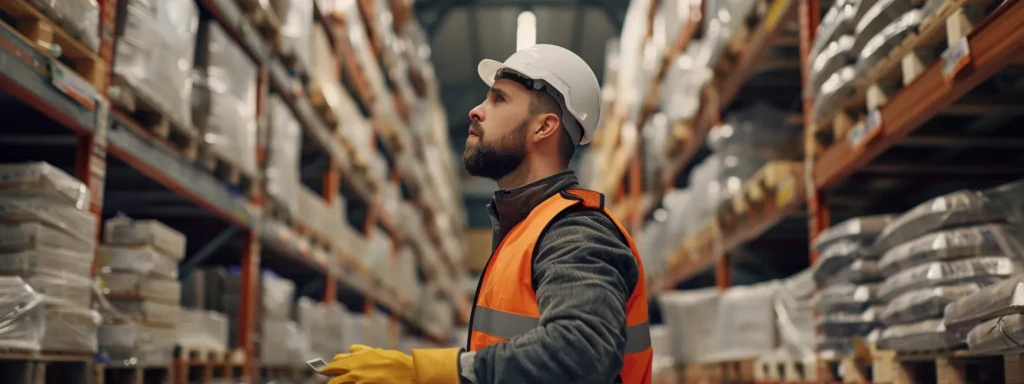
Selecting Sustainable Materials for Construction
Utilizing renewable and recycled building materials is essential in green building, as it reduces waste and conserves resources. Choosing energy-efficient insulation options enhances habitat comfort while minimizing noise and stormwater impacts. Opting for low-VOC paints and finishes improves indoor air quality, and sourcing materials locally supports the community and reduces transportation emissions, aligning with renewable energy goals.
Utilizing Renewable and Recycled Building Materials
Utilizing renewable and recycled building materials is a fundamental aspect of sustainable construction that significantly enhances water quality and reduces surface runoff. By selecting materials with optimal density, builders can improve energy efficiency and create structures that withstand wind forces more effectively. For instance, using reclaimed wood not only minimizes waste but also contributes to a healthier indoor environment, addressing the growing concern for sustainable living practices.
- Enhances water quality by reducing surface runoff.
- Improves energy efficiency through optimal material density.
- Utilizes reclaimed wood to minimize waste.
- Addresses concerns for healthier indoor environments.
Choosing Energy-Efficient Insulation Options
Choosing energy-efficient insulation options is a critical component of sustainable building practices. Insulation materials that are manufactured with minimal environmental impact, such as those derived from recycled content or natural fibers, can significantly reduce energy consumption in buildings. Additionally, using prefabrication techniques can streamline the installation process, minimizing waste and addressing issues like erosion and nonpoint source pollution associated with traditional construction methods, particularly when cement is involved.
- Utilizes insulation materials with minimal environmental impact.
- Reduces energy consumption in buildings.
- Incorporates prefabrication techniques to minimize waste.
- Addresses erosion and nonpoint source pollution concerns.
Opting for Low-Voc Paints and Finishes
Opting for low-VOC paints and finishes is a crucial step in sustainable building, as these products significantly reduce air pollution and improve indoor air quality. By minimizing volatile organic compounds, builders can create healthier environments that contribute positively to climate goals. Additionally, using low-VOC options aligns with practices like rainwater harvesting, as it ensures that runoff does not carry harmful chemicals into local waterways, further protecting ecosystems and promoting sustainability.
Sourcing Materials Locally
Sourcing materials locally is a vital aspect of sustainable development, as it reduces transportation emissions and supports the local economy. By selecting materials that are readily available in the surrounding landscape, builders can create environmentally friendly structures that minimize their ecological footprint. For instance, using local stone or timber not only enhances the aesthetic appeal of a project but also promotes infill development, which efficiently utilizes existing spaces while preserving natural habitats and swales that manage stormwater effectively.
| Aspect | Benefits |
|---|---|
| Local Sourcing | Reduces transportation emissions and supports local economy |
| Material Selection | Enhances aesthetic appeal and promotes sustainable development |
| Infill Development | Utilizes existing spaces and preserves natural habitats |
| Swales | Effectively manages stormwater and reduces runoff |
Choosing the right materials lays the groundwork for a better future. Next, the focus shifts to how design can harness energy, making spaces not just livable, but efficient.
Implementing Energy-Efficient Design Strategies
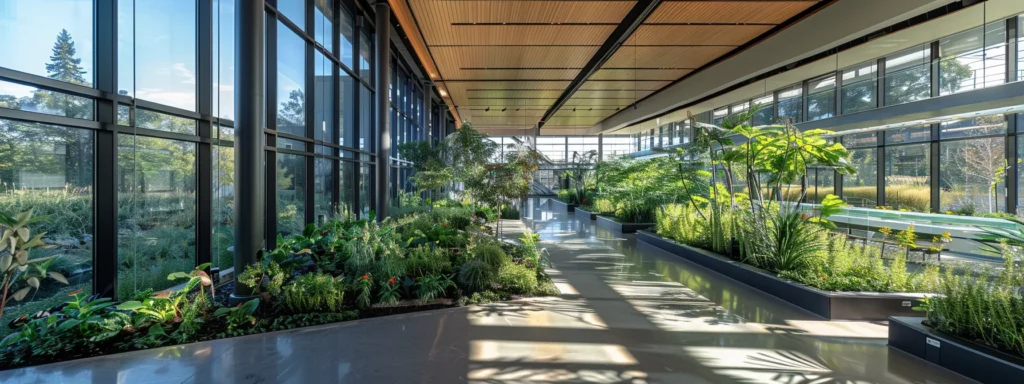
Applying passive solar design principles optimizes energy use by harnessing natural sunlight, while maximizing natural lighting in structures reduces reliance on artificial sources. Installing high-efficiency HVAC systems minimizes energy consumption, and integrating smart energy management technologies enhances overall efficiency. These strategies collectively address storm water runoff and its impact on construction, ensuring a sustainable approach to building design.
Applying Passive Solar Design Principles
Applying passive solar design principles is a vital strategy in sustainable building that significantly reduces the ecological footprint of a structure. By strategically positioning windows and utilizing thermal mass, builders can maximize natural light and heat, minimizing the need for artificial lighting and heating systems. This approach not only enhances energy efficiency but also allows for the reuse of materials, such as reclaimed wood, while effectively managing greywater through infiltration systems that support landscape irrigation without contributing to dust or erosion issues.
Maximizing Natural Lighting in Structures
Maximizing natural lighting in structures is a key strategy for enhancing sustainability and reducing energy consumption. By incorporating design elements such as large windows and skylights, builders can minimize reliance on artificial lighting, which not only lowers energy costs but also contributes to water conservation efforts by reducing the need for cooling systems. Additionally, integrating features like rain gardens can help manage stormwater runoff from impervious surfaces, mitigating the urban heat island effect and promoting a healthier environment.
Installing High-Efficiency HVAC Systems
Installing high-efficiency HVAC systems is a critical component of sustainable building practices, significantly reducing energy consumption and carbon emissions. These advanced systems not only enhance indoor comfort but also integrate seamlessly with other infrastructure, such as irrigation systems, to optimize water usage. By minimizing sediment buildup and ensuring efficient operation, builders can create environments that support both ecological health and energy efficiency, addressing the growing demand for low-impact construction solutions.
Integrating Smart Energy Management Technologies
Integrating smart energy management technologies is essential for reducing the carbon footprint of buildings while promoting sustainable design. These systems enable real-time monitoring and control of energy usage, allowing for adjustments that enhance efficiency and minimize waste. For instance, smart thermostats can optimize heating and cooling based on occupancy patterns, significantly lowering energy consumption and supporting hydrology by reducing runoff from excessive energy use.
Energy-efficient design lays the groundwork for a sustainable future. Next, the focus shifts to water conservation techniques that further enhance our commitment to responsible living.
Incorporating Water Conservation Techniques
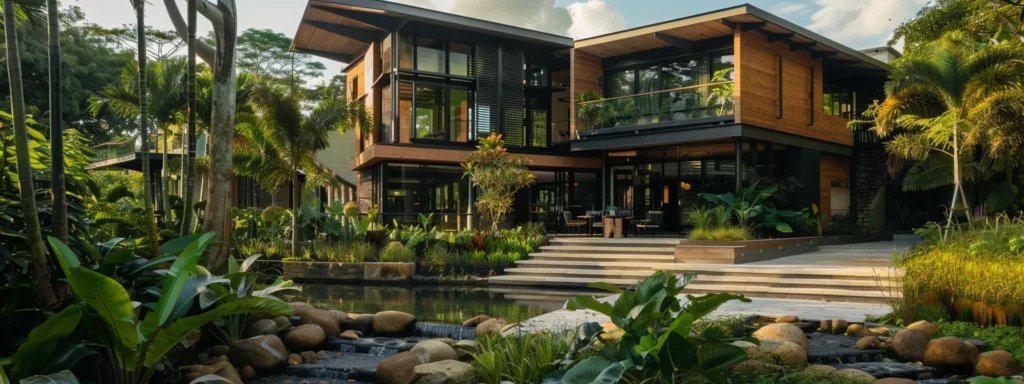
Incorporating water conservation techniques is essential for sustainable architecture, significantly reducing urban runoff and greenhouse gas emissions. Setting up rainwater harvesting systems captures valuable resources, while low-flow plumbing fixtures minimize water usage. Implementing greywater recycling systems further enhances efficiency, and designing water-efficient landscaping promotes erosion control, ensuring a holistic approach to eco-friendly construction.
Setting Up Rainwater Harvesting Systems
Setting up rainwater harvesting systems is a practical approach to enhance water conservation in sustainable building projects. By collecting rainwater from roofs and directing it through concrete gutters into storage tanks, builders can significantly reduce waste and reliance on municipal water sources. Incorporating bioretention areas with pavers can further improve water management, allowing for natural filtration and promoting healthier landscapes while utilizing materials like wood for aesthetic appeal.
- Collect rainwater from roofs using concrete gutters.
- Store harvested rainwater in tanks to reduce waste.
- Incorporate bioretention areas with pavers for natural filtration.
- Utilize wood for aesthetic enhancements in landscaping.
Using Low-Flow Plumbing Fixtures
Using low-flow plumbing fixtures is a practical approach to conserving water resources in sustainable building projects. These fixtures significantly reduce water consumption without sacrificing performance, making them ideal for both residential and commercial applications. By integrating low-flow toilets, faucets, and showerheads, builders can enhance water efficiency while contributing to the overall sustainability of the construction, ultimately benefiting the environment and reducing utility costs for homeowners.
| Fixture Type | Water Savings | Benefits |
|---|---|---|
| Low-Flow Toilets | Up to 1.6 gallons per flush | Reduces water usage and lowers bills |
| Low-Flow Faucets | 1.5 gallons per minute | Improves efficiency without compromising pressure |
| Low-Flow Showerheads | 1.8 gallons per minute | Enhances comfort while conserving water |
Implementing Greywater Recycling Systems
Implementing greywater recycling systems is a practical and effective strategy for enhancing water conservation in sustainable building projects. By capturing and reusing water from sinks, showers, and washing machines, homeowners can significantly reduce their overall water consumption while maintaining functionality. This approach not only lowers utility costs but also contributes to environmental sustainability by minimizing the demand on municipal water supplies and reducing wastewater discharge.
| System Component | Function | Benefits |
|---|---|---|
| Collection Tank | Stores greywater for reuse | Reduces water waste and conserves resources |
| Filtration System | Removes impurities from greywater | Ensures safe reuse for irrigation and flushing |
| Distribution Network | Delivers treated greywater to designated areas | Maximizes efficiency in water usage |
Designing Water-Efficient Landscaping
Designing water-efficient landscaping is a crucial aspect of sustainable building that significantly reduces water consumption and enhances ecological health. By incorporating native plants that require minimal irrigation, builders can create attractive outdoor spaces that thrive in local conditions while conserving water resources. Additionally, implementing features such as rain gardens and permeable paving allows for effective stormwater management, promoting natural filtration and reducing runoff, which ultimately supports a healthier environment.
Water conservation is just one part of the puzzle. Next, the focus shifts to reducing waste in construction projects, a crucial step in building responsibly.
Reducing Waste in Construction Projects
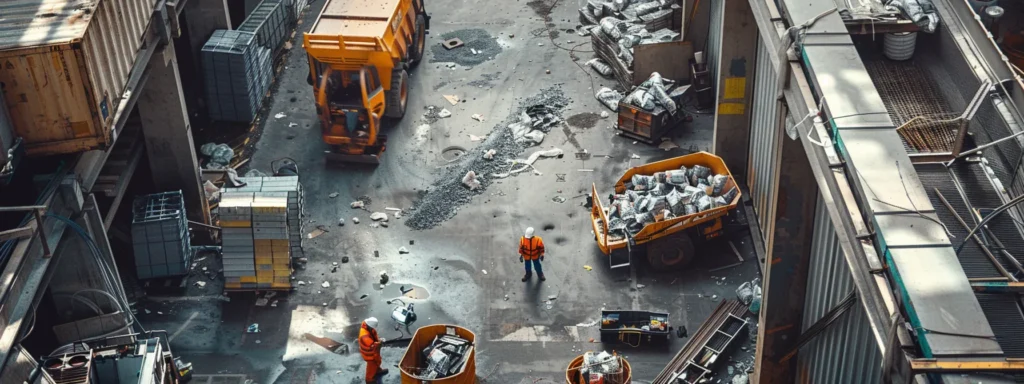
Developing a Construction Waste Management Plan is essential for minimizing environmental impact in sustainable building. This plan outlines strategies for recycling materials on-site, ensuring that valuable resources are repurposed effectively. Additionally, minimizing waste through prefabrication techniques streamlines the construction process, further enhancing efficiency. Each of these approaches contributes significantly to achieving low-impact construction goals.
Developing a Construction Waste Management Plan
Developing a Construction Waste Management Plan is a critical step in achieving sustainable building goals. This plan should outline specific strategies for recycling and repurposing materials on-site, which not only minimizes waste but also conserves valuable resources. By implementing effective waste management practices, builders can significantly reduce their environmental impact while enhancing project efficiency, ultimately leading to a more sustainable construction process.
Recycling Materials on-Site
Recycling materials on-site is a vital practice in sustainable building that significantly reduces waste and enhances resource efficiency. By implementing strategies such as sorting and reusing materials like wood, metal, and concrete during construction, builders can minimize landfill contributions and lower project costs. For example, reclaimed wood can be repurposed for new structures or finishes, providing both aesthetic appeal and environmental benefits.
- Minimizes landfill contributions.
- Lowers project costs through resource reuse.
- Enhances aesthetic appeal with reclaimed materials.
- Promotes environmental benefits by reducing waste.
Minimizing Waste Through Prefabrication
Minimizing waste through prefabrication is a key strategy in sustainable building that significantly enhances efficiency and reduces environmental impact. By manufacturing components off-site in controlled environments, builders can ensure precise measurements and reduce material waste, leading to a more streamlined construction process. For instance, using prefabricated wall panels not only speeds up installation but also minimizes the disruption to the surrounding environment, addressing common concerns related to traditional construction methods.
| Aspect | Benefits |
|---|---|
| Off-Site Manufacturing | Reduces material waste and enhances precision |
| Streamlined Installation | Speeds up construction timelines |
| Environmental Impact | Minimizes disruption to local ecosystems |
| Cost Efficiency | Lowers overall project costs through reduced waste |
Construction can change. It can become smarter and kinder to the earth. In the next section, real examples show how this is done.
Learning From Sustainable Building Case Studies
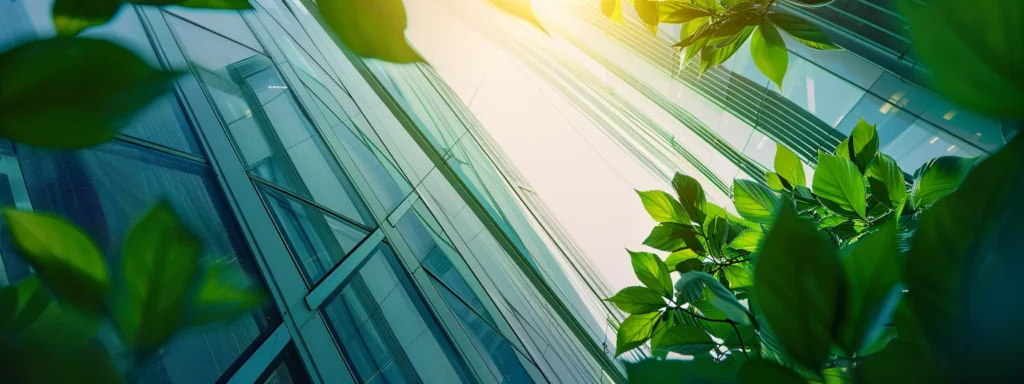
Reviewing innovative eco-friendly projects reveals valuable insights into sustainable building practices. Lessons learned from low-impact construction highlight effective strategies that can be applied to future projects. By examining these case studies, builders and architects can adopt best practices that enhance environmental performance and resource efficiency, ultimately contributing to the advancement of sustainable construction methods.
Reviewing Innovative Eco-Friendly Projects
Reviewing innovative eco-friendly projects provides valuable insights into effective sustainable building practices. For instance, a recent project in California utilized reclaimed materials and energy-efficient systems, significantly reducing its carbon footprint while enhancing aesthetic appeal. By analyzing such case studies, builders can adopt proven strategies that not only meet environmental goals but also address the growing demand for low-impact construction solutions.
Lessons Learned From Low-Impact Construction
Lessons learned from low-impact construction emphasize the importance of integrating sustainable practices throughout the building process. For instance, projects that prioritize the use of reclaimed materials not only reduce waste but also enhance the aesthetic appeal of structures. By adopting energy-efficient systems and effective waste management strategies, builders can significantly lower their environmental impact while meeting the growing demand for eco-friendly solutions in both residential and commercial renovations.
Applying Best Practices to Future Projects
Applying best practices from sustainable building case studies can significantly enhance future projects by integrating proven eco-friendly techniques. For instance, utilizing reclaimed materials not only reduces waste but also adds unique character to new constructions. By adopting energy-efficient systems and effective waste management strategies, builders can create structures that meet both environmental goals and the increasing demand for low-impact construction solutions.
Conclusion
Sustainable building is essential for minimizing environmental impact and promoting resource efficiency in construction. By implementing eco-friendly techniques such as utilizing renewable materials, optimizing energy use, and managing water resources, builders can significantly reduce their carbon footprints. These practices not only enhance the functionality and aesthetic appeal of structures but also contribute to the preservation of local ecosystems. Embracing sustainable building methods is a crucial step toward creating a healthier environment for future generations.

